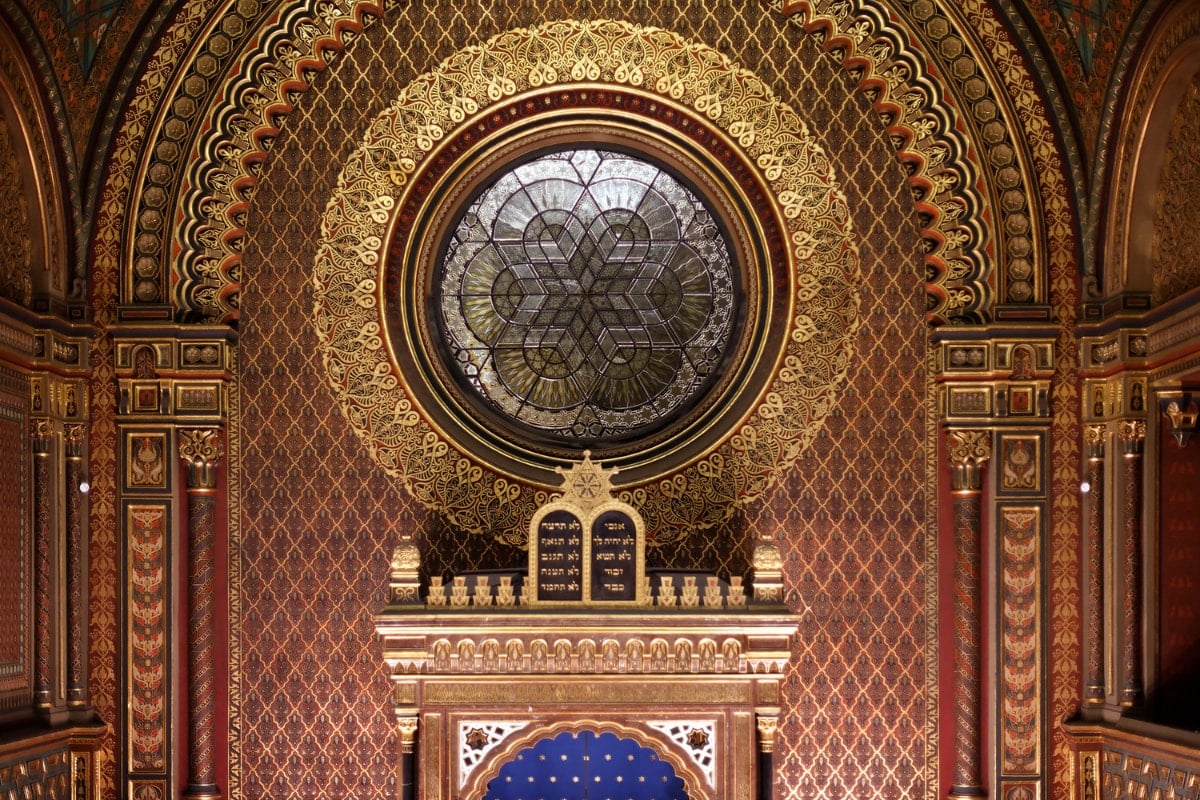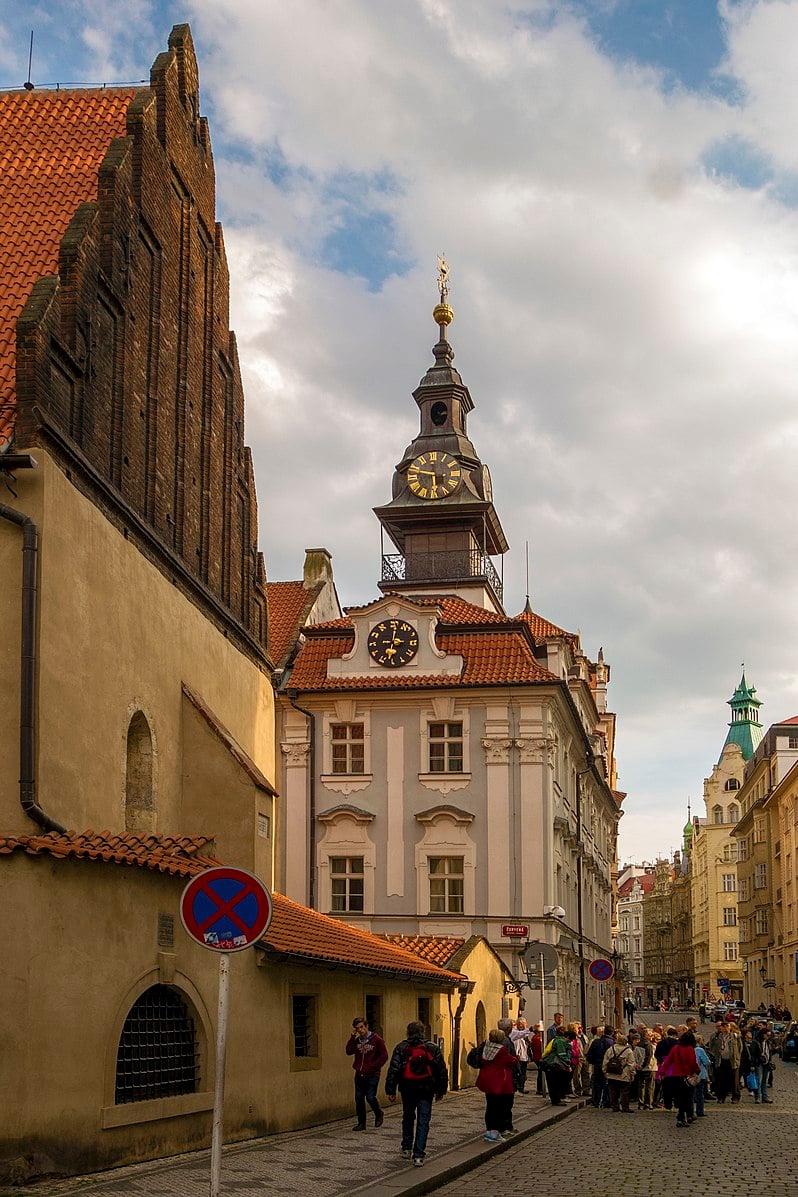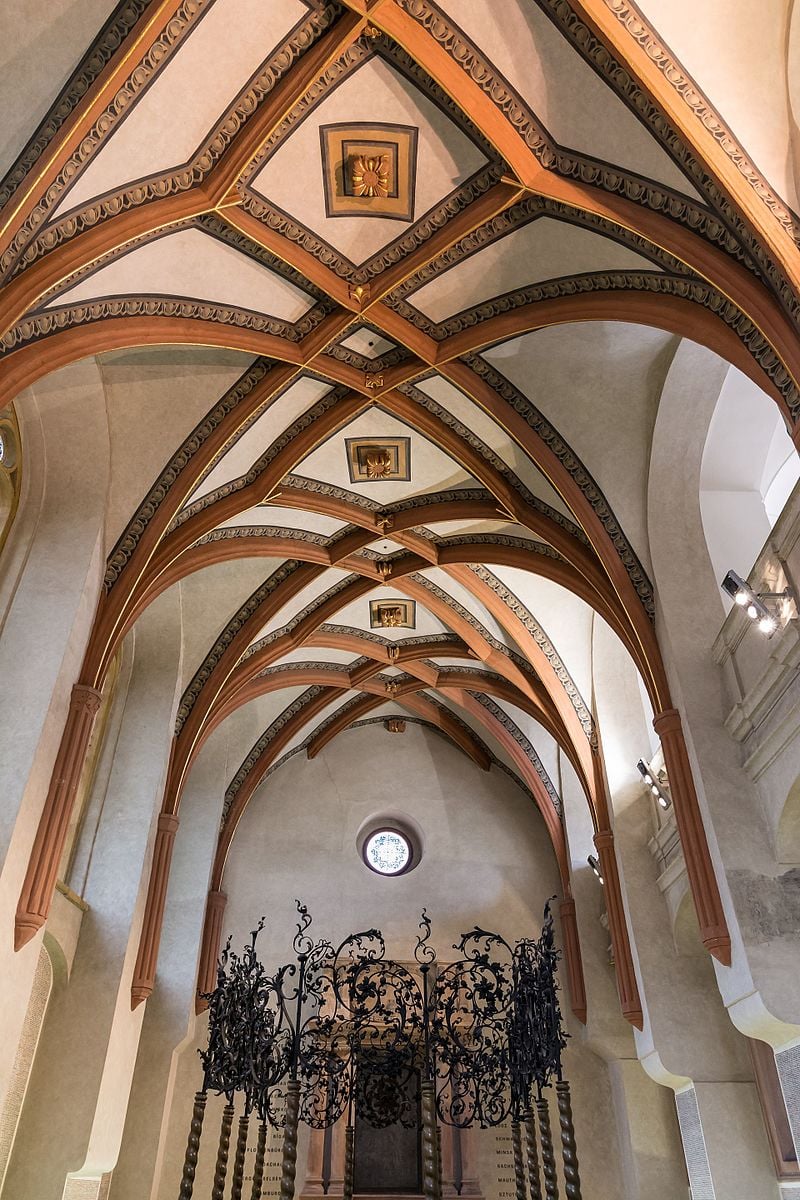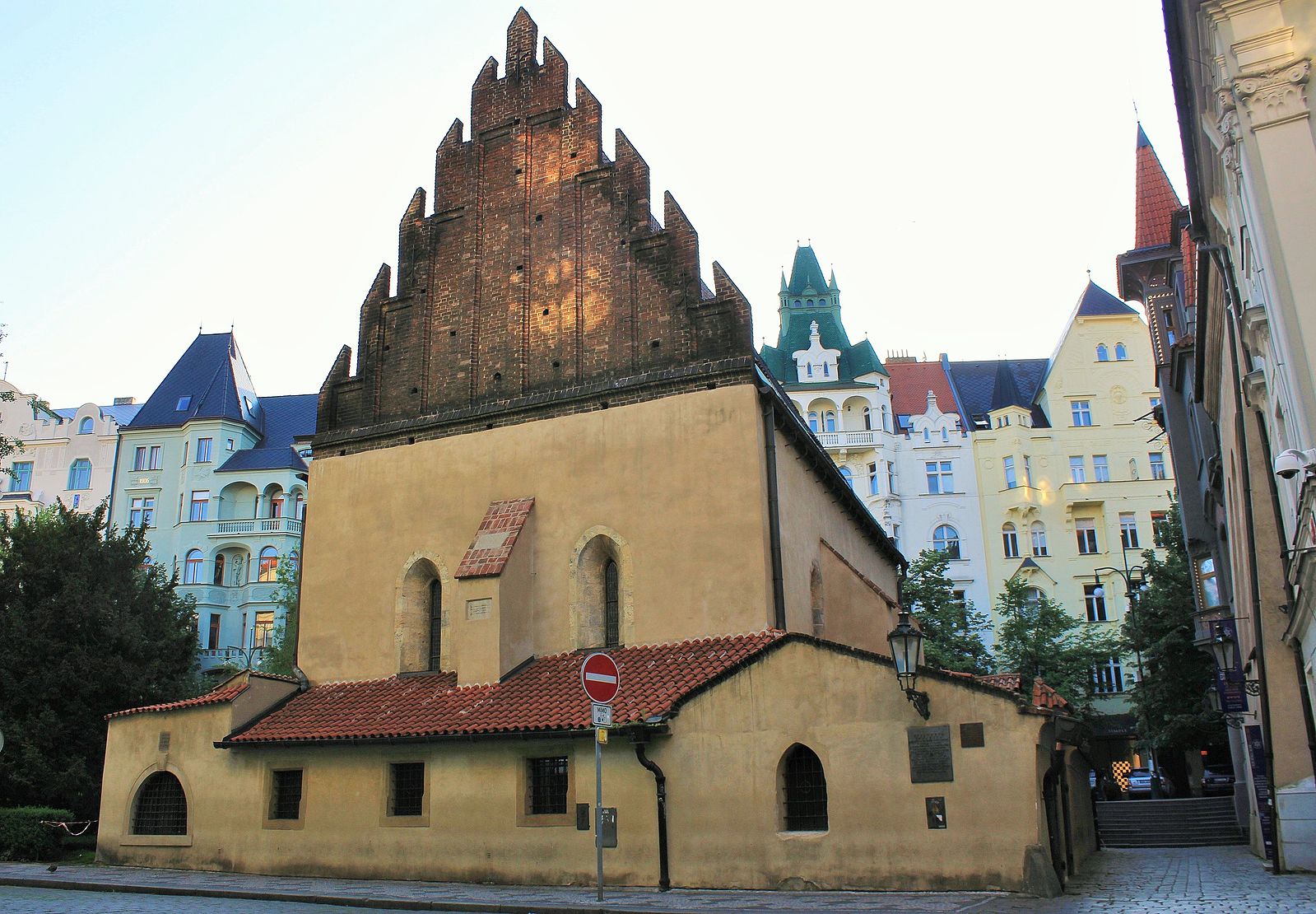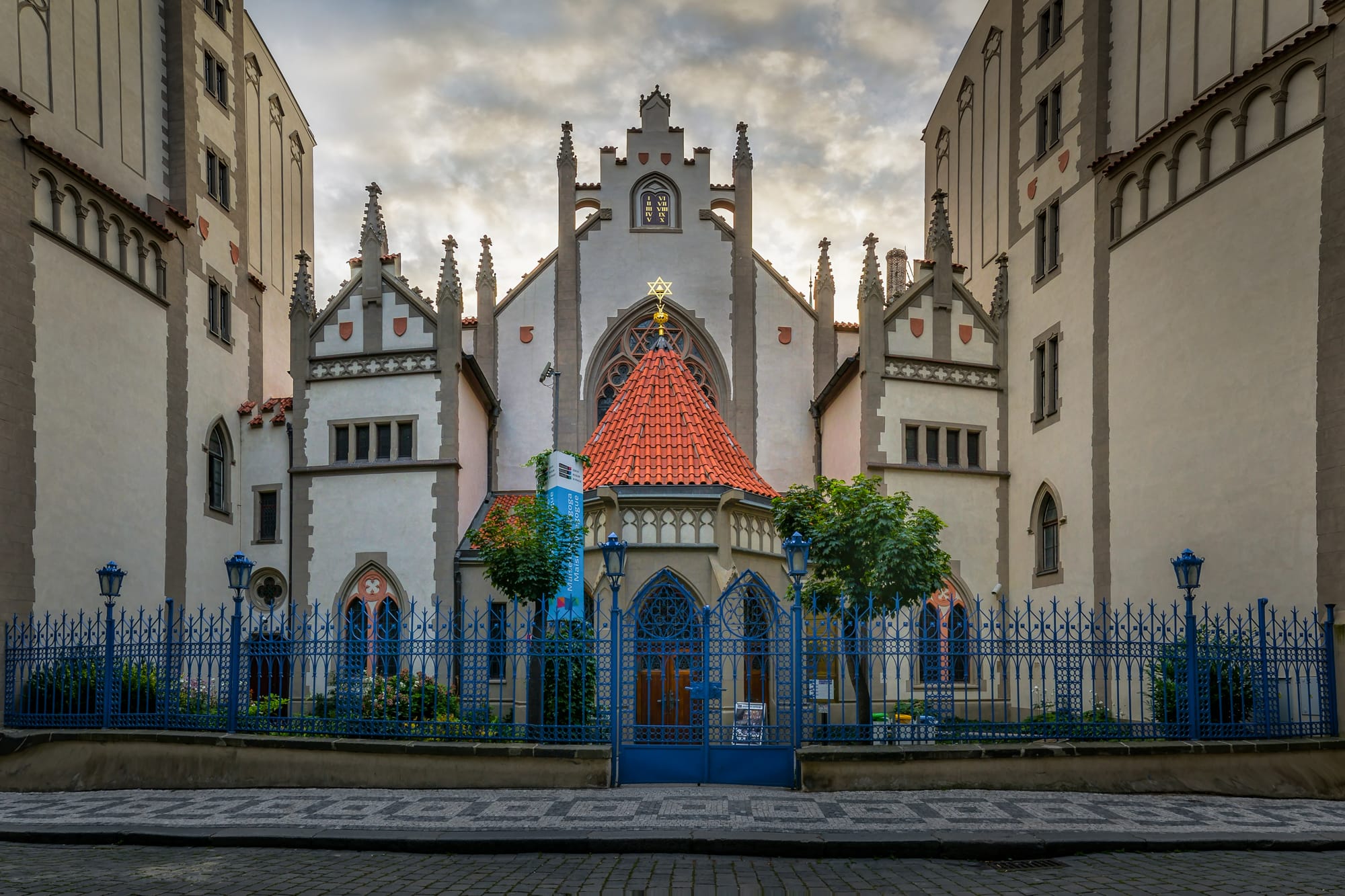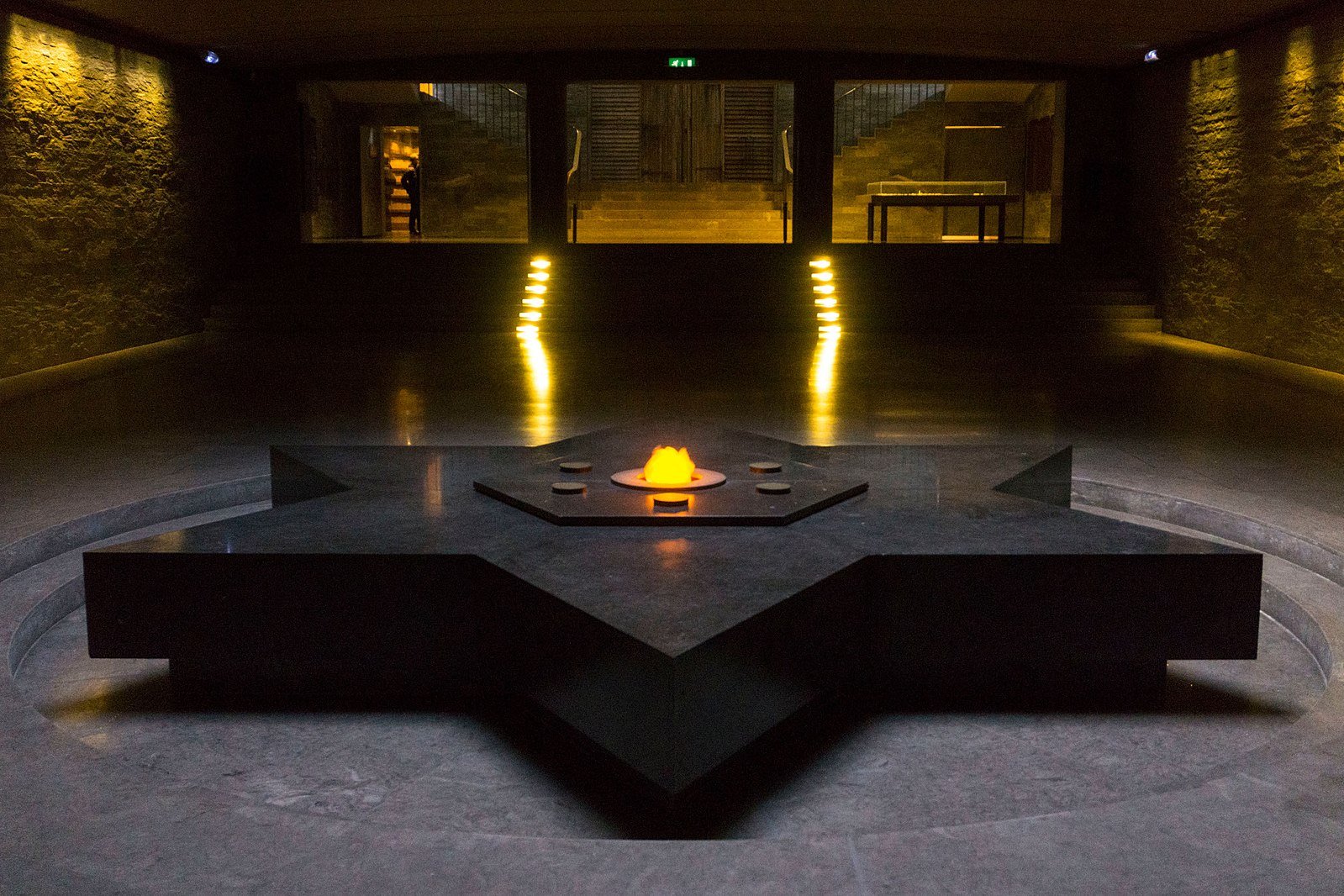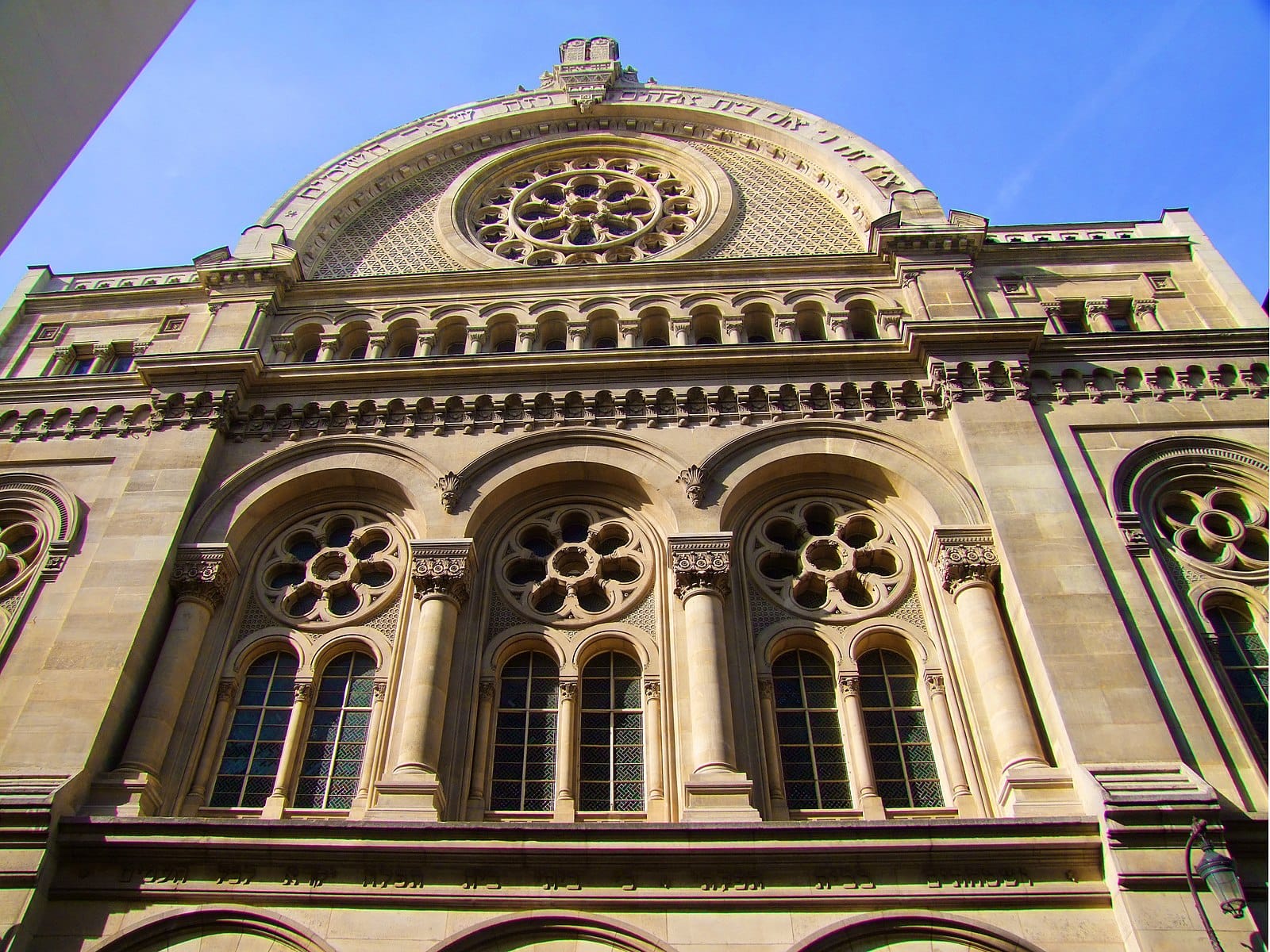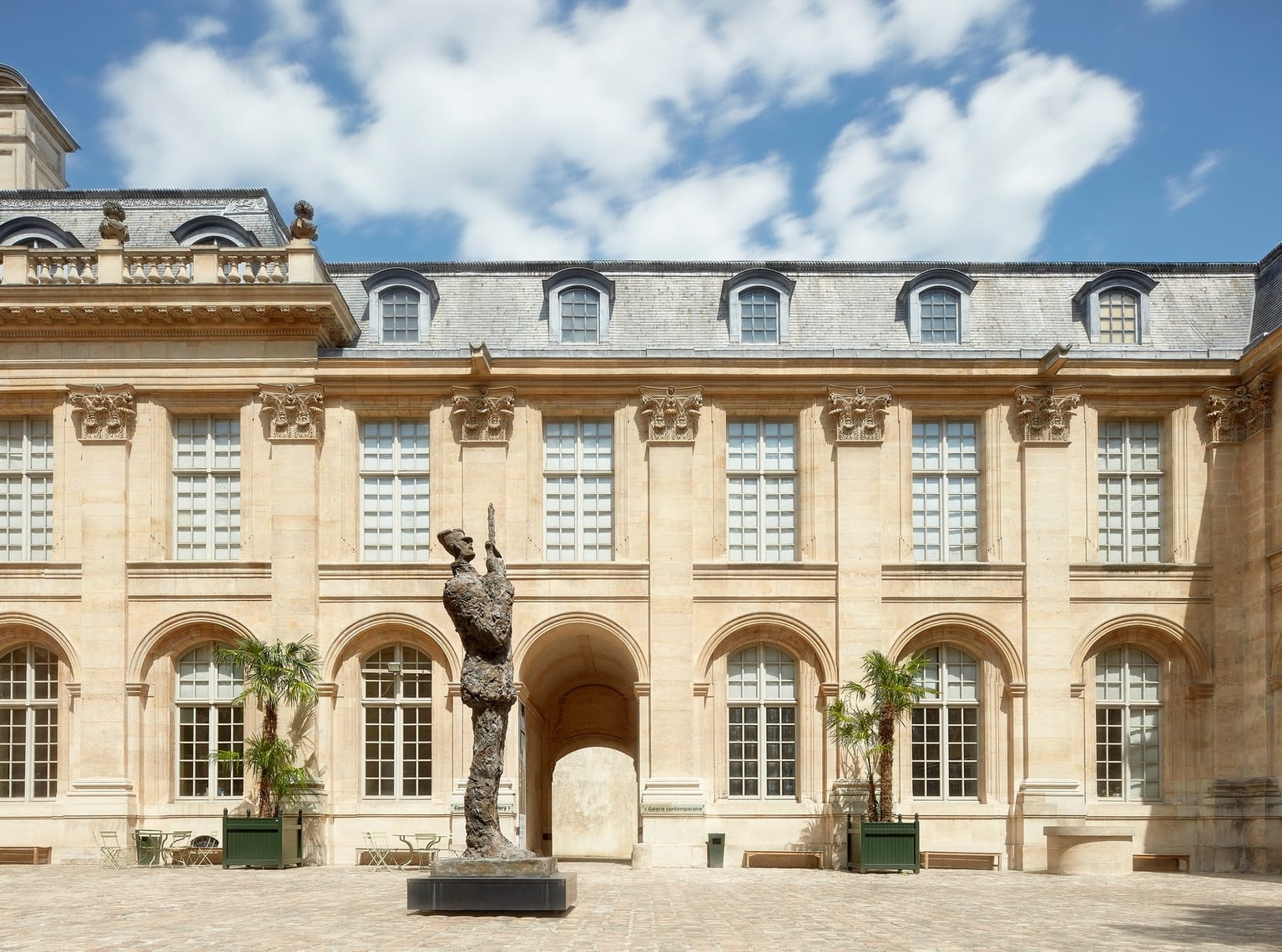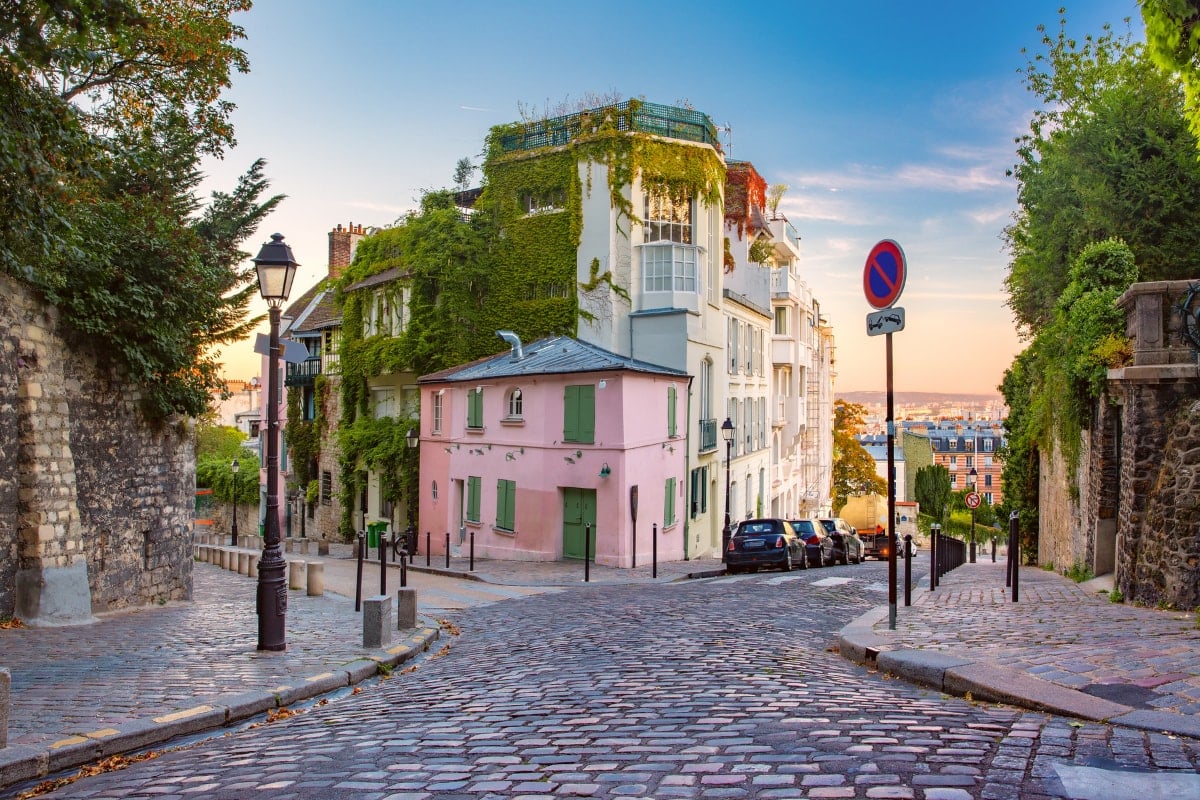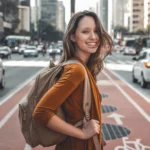The Spanish Synagogue was built in the late 19th century, making it one of Prague’s more recent historic synagogues. This is evidenced by its lavish appearance, which is in stark contrast to the other fairly modest synagogues in Josefov. The Spanish Synagogue boasts a well-kept, beautifully detailed facade, with a Spanish Moorish style. Even the impressive exterior is incomparable to the inner section of the synagogue, with its elaborate decorations, intricately designed ceilings, beautiful arches, stained glass windows and an ornate Holy Ark. Once used as a sacred space for prayers, the synagogue today is a museum and concert hall, which is open daily to visitors. Be sure to check the museum’s website for visiting hours as they vary depending on the season.
Archives: Directory listings
Directory listings
Jewish Ceremonial Hall
The Jewish Ceremonial Hall (Obřadní síň in Czech) can be found in the Josefov or Jewish Quarter of Prague, the capital of the Czech Republic. It was built in 1911-12 under the direction of architect J. Gerstl for the Jewish Burial Society (Hevra Kadisha) and is in the neo-Romanesque style. Originally used as a ceremonial hall and mortuary it now forms part of The Jewish Museum of Prague holding exhibitions relating to Jewish history.
The ticket you get from the museum covers a guided visit of the Ceremonial Hall, Old Jewish Cemetery, The Old-New Synagogue, the Pinkas Synagogue, the Klausen Synagogue, the Spanish Synagogue and Meisel Synagogue.
Image Attribution: Official Tourism Website of Prague
The Jewish Town Hall
Like many other structures in Prague’s Jewish Quarter, the Jewish Town Hall (Židovská Radnice in Czech) was funded by Mordechai Maisel, the community leader, philanthropist and one of its richest citizens during the 16th century. The Hall was built by Panacius Roder in 1586, with a distinct Renaissance style. It was originally used as the main meeting point for the local Jewish community until it was destroyed by a fire in 1755. The building was then reconstructed by Josef Schlesinger, in a Late Baroque style. This historical landmark boasts two clocks on its façade, a feature that symbolizes the former Prague Ghetto. The clock which is higher up on the tower uses Roman numerals. Notably, the second clock uses Hebrew numerals and hands that move counterclockwise. Although the Town Hall is not open to the public, it is still worth seeking out when touring the Jewish Quarter.
Image attribution:
Jim, CC BY 2.0
jerzy Strzelecki, CC BY-SA 3.0
Richard Mortel from Riyadh, Saudi Arabia, CC BY 2.0
hakkun, CC BY-SA 3.0
Yair Haklai, CC BY-SA 4.0
Pinkas Synagogue
Built in late Gothic style during 1535, the Pinkas Synagogue is Prague’s second oldest preserved synagogue. The synagogue was transformed into a memorial for the 80,000 Bohemian and Moravian Jews who were killed during the Holocaust. Following the Soviet invasion of 1968, the memorial was closed for 20 years. It was reopened to the public in 1995. An exhibition featuring children’s drawings from the Terezín Ghetto is permanently on display. The exhibition was produced under artist Friedl Dicker-Brandeis’ supervision.
Image attribution:
Øyvind Holmstad, CC BY-SA 3.0
Uoaei1, CC BY-SA 4.0
The Old New Synagogue
The Old New Synagogue is one of Prague’s longest standing Jewish sites and the oldest active synagogue in Europe. Situated in Josefov, the synagogue is one of Prague’s first Gothic style buildings. The impressive structure, built in 1270, is a major attraction for lovers of architecture. For over 700 years, the Old New Synagogue was Prague’s main synagogue and the primary place of worship for Prague’s Jews. Since it was built, it has been in constant use by the Jewish community, except during WWII.
Image attribution:
Richard Mortel from Riyadh, Saudi Arabia, CC BY 2.0
Øyvind Holmstad, CC BY-SA 3.0
Maisel Synagogue
The Maisel Synagogue (Maiselova synagogue in Czech) was funded by Mordechai Maisel. The impressive synagogue was built by Judah Tzoref de Herz and Josef Wahl in 1592. The architects designed the Renaissance style structure with three naves, which was unusual for its time. It served as both a place of prayer and a venue for Jewish social gatherings. It had to be rebuilt numerous times after a fire in the ghetto burnt the original structure down in 1689. The latest reconstruction, by Prof. A Grotte in 1893, uses a Neo-Gothic style, which blends it with the neighborhood’s new appearance. Jews in the Bohemian Lands, 10th-18th Century is a permanent exhibition in this synagogue-turned-museum, The exhibit has some new items on display and audio-visual and interactive elements were recently added.
Image Attribution: Official Tourism Website of Prague
Memorial de la Shoah
Mémorial de la Shoah is the Holocaust museum in Paris, France. The memorial is in the 4th arrondissement of Paris, in the Marais district, which had a large Jewish population at the beginning of World War II. The memorial was opened, by President Jacques Chirac, on 27 January 2005. This day was chosen to coincide with International Holocaust Remembrance Day and the 60th anniversary of the liberation of Auschwitz concentration camp. The memorial underwent a major renovation in 2005, creating exhibition spaces, a multimedia center, and a reading room.
Wall of Names
Several walls that make a passageway to the building list the names of the approximately 76,000 French Jews who were deported and murdered by the Nazis. They are listed alphabetically by year of deportation.
The Crypt
The crypt predates the Mémorial de la Shoah; in 1957, the ashes of victims from the different death camps and the Warsaw Ghetto were buried in dirt from Israel. A door from the Beaune-la-Rolande internment camp in France faces the tomb.
The “Jewish Files”
The Jewish files are located in a small room near the crypt. They were created by the Vichy government to identify Jewish citizens, and were later used by the Nazis to locate Jews for deportation.
Exhibit Rooms
The memorial’s permanent exhibit documents the history of French Jews during the Holocaust. The materials on exhibit include photographs, text, and video and audio recordings.
The memorial also includes an auditorium, bookstore, multimedia learning center, documentation center, and the Room of Names (research room).
The Wall of the Righteous
Since 1963, the Museum Memorial of Yad Vashem (Jerusalem) has awarded the title “Righteous Among the Nations” to non-Jewish people who helped save Jews during the war. As of 2014, this wall lists 3,300 people, either French or acting in France, who have been awarded this title. The wall runs alongside of the memorial.
Image attribution:
BrnGrby, CC BY-SA 4.0
Grand Synagogue de Paris
The Grand Synagogue of Paris, generally known as Synagogue de la Victoire or Grande Synagogue de la Victoire, is situated at 44, Rue de la Victoire, in the 9th arrondissement. It also serves as the official seat of the chief rabbi of Paris.
The architect was Alfred-Philibert Aldrophe (1834–1895) who also built the Versailles Synagogue and that of Enghien-les-Bains. Building commenced in 1867 and the Synagogue was inaugurated in 1874, and opened to the general public in 1875, built in the classical style, but embellished with Byzantine frills. The inscription in Hebrew at the entrance is a verse from Genesis 28,17 : “This is none other than the House of God, the very gateway to Heaven”, the same as is found on the entrance to the synagogue of Reims and that of Bar-le-Duc.
The interior has a number of religious inscriptions above the doors. In the choir pulpit is written in French the names of the prophets. Above the Torah Ark is engraved with the words “ה ‘ניסי” (“The Lord-is-my-banner” Ex 17:15) It also includes a series of 12 stained glass windows symbolising the Tribes of Israel.
Every year, the Sunday before Rosh Hashanah (Jewish New Year), there takes place a ceremony in remembrance of the Martyrs of the Deportation, which is televised on France 2.
Image attribution:
Luiza Fediuc, CC BY-SA 3.0
Olevy, CC BY-SA 3.0
Jewish Museum of Art and History
The Museum of Jewish Art and History is the largest French museum of Jewish art and history. It is located in the Hôtel de Saint-Aignan in the Marais district in Paris.
The museum conveys the rich history and culture of Jews in Europe and North Africa from the Middle Ages to the 20th century. Its fine collection of religious objects, archives, manuscripts, and works of art promotes the contributions of Jews to France and to the world, especially in the arts. The museum’s collections include works of art from Marc Chagall and Amedeo Modigliani.
The museum has a bookshop selling books on Jewish art and history and Judaica, a media library with an online catalogue accessible to the public, and an auditorium which offers conferences, lectures, concerts, performances, and seminars. It also provides guided weekly visits in English during the tourist season (April to July) for individuals as well as students and teachers, and workshops for children, families, and adults.
The Pletzl – Jewish Quarter of Paris
The Pletzl (“little place” in Yiddish) is the Jewish quarter in the 4th arrondissement of Paris, France. The Place Saint-Paul and the surrounding area were unofficially named the Pletzl when the neighborhood became predominantly Jewish after an influx of immigrants in the late 19th and early 20th centuries.
The area hosts a diverse Jewish community, assembling traditional Jewish families as well as many more who arrived through immigration from Eastern Europe and North Africa through the past centuries. The area is now characterised by its synagogues, butchers, delicatessens, and falafel vendors, which provide a social and cultural fabric for its inhabitants.
The darkest days for the Pletzl came during World War II, when Vichy France’s collaboration with the Nazis resulted in raids that saw many residents abducted and sent off to concentration camps. Today, the community is an extremely religious Orthodox one, and most citizens belong to one of the three local synagogues: one located at 17 Rue des Rosiers, another at 25 Rue des Rosiers, and the last one at 10 Rue Pavée; the latter is an art nouveau temple designed by Hector Guimard, famous for his work on the Paris Métro.
